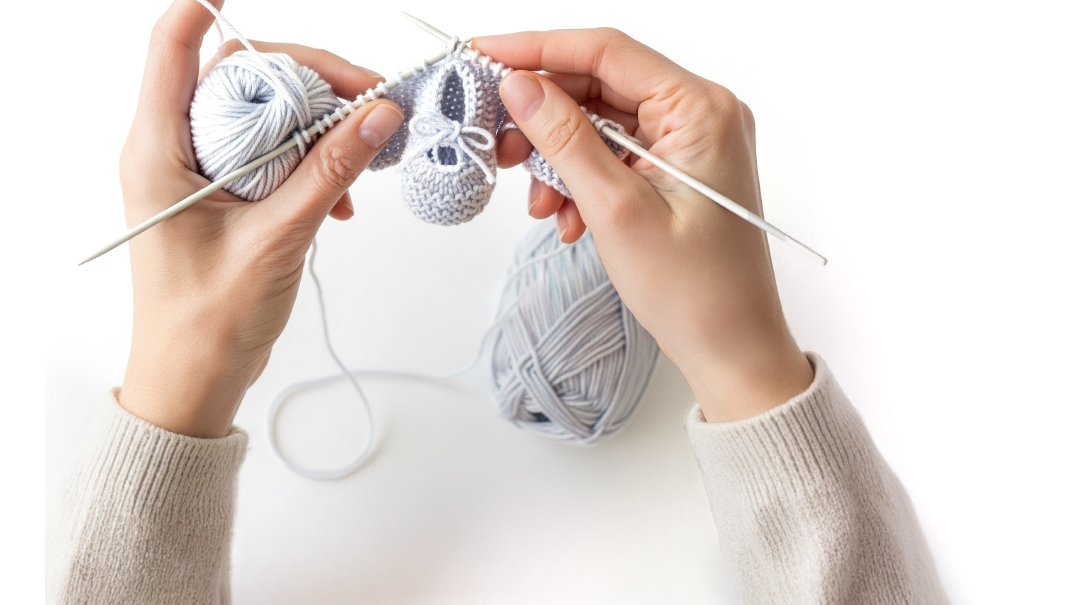He Said, She Said
| March 8, 2022We follow a typical frum family on Purim and see just how much men and women are on different communication planets

Have you ever felt that even though you’re speaking the same language as a man, you’re really not speaking the same language at all? We joke about the differences between the genders, but when it comes to communication, it’s no joke. Women were given nine measures of speech, and it looks like each measure is very different from the single one given to man.
Let's follow a typical frum family through the day of Purim and see just how much men and women are on different communication planets. In the spirit of Purim, we present it as a play in six acts
Act One
Everyone is finally home after hearing Megillah, and the house is on wheels. A miniature policeman in a blue costume complete with walkie-talkie, badge, handcuffs, and hat is conducting an unauthorized investigation of who sent the best mishloach manos.
An even-smaller kallah is hiding under the table, helping herself to a bag of chips from the “extra nosh to give out if more people come than anticipated” box.
Running around the house are a clown and a soldier, and a little bumblebee is crawling on the floor between the discarded bags and boxes, babbling happily to herself.
He says: “What on earth…?”
She says: “Oh, my little Devorah’le! Who’s soooo cute? Who, who, who? You are! My shmushy cutie ootie! You are very, very, verrrrrry cute!”
She picks up her baby and gives her a hug and a kiss on her chubby cheek, just as the clown and the soldier collide, knocking each other down and bursting into tears.
He says: “Don’t be so wild!”
Holding the clown and soldier close, she says: “Oy zeeskeits! Are you both hurt? You’re so, so sad? Where are your boo-boos? Should I kiss them? Here you go! Is that better?”
What’s the translation?
Research has shown that mothers communicate more with their toddlers and young children than fathers do. And when fathers do communicate, it’s with more direct requests (“Give me the ball”), more wh- questions (“What are you doing?”), more prohibitions (“No, don’t touch that!”), and more requests for clarification on what the child is saying (“Huh?”) than a mother.
Research has also shown that, in addition to communicating more with children, women are also more likely to take liberties with language, either using nonsense words or stretching an existing word out of shape. “Sweetie” can become “Sweeeeeetie,” “Sweetieeeee,” “Sweets,” “Sweetums,” — you get the idea.
Linguist Robin Lakoff’s book, Language and Woman’s Place, published in 1975, is credited with introducing many ideas about women’s language to the field of sociolinguistics. While today, many of these observations are mainstream, at the time, her observations were groundbreaking.
Lakoff identified ten different patterns of female speech. One of these patterns was the tendency to “speak in italics.” Women also include more words like “so,” “very,” and “quite,” using tone of voice to place further emphasis on these words.
Act Two
There’s a knock on the door. The soldier runs to answer it, and when he sees who it is, starts calling “Mommy” loudly. She quickly comes to the door and sees that it’s the young son of the geshikt neighbor across the street, holding a deluxe, professional-looking mishloach manos.
She starts hyperventilating because the package she was making for that very neighbor, the one with the candied nuts and fancy salad in cute matching containers, isn’t even close to ready. The only thing she has to give at the moment is the generic bag filled with Dipsy Doodles and a Mondo meant for the neighborhood children.
Taking the elaborate mishloach manos into her arms, she says, “Wow! I can’t believe how stunning this is! Please tell your mother I’m blown away, no, sorry, I’m super impressed at how beautiful this is. And tell her I’m terribly sorry I didn’t have a chance to make hers yet, but that we’ll send it over as soon as we can. And tell her there’s no one else as talented as her on the whole block, no, sorry, maybe in the whole neighborhood! She’s one of a kind!”
After she closes the door, she sinks to the floor, cradling the impressive package in her lap. She takes deep breaths and says to her husband, “Just look at this package!”
Glancing briefly at it, he mutters: “Nice.”
What’s the translation?
Another part of speech Lakoff identified that’s particular to women is the use of “empty” adjectives. You know how everything is “amazing,” “beyond,” “so special,” “heaven,” or “not normal”? Lakoff describes these empty adjectives as “adjectives that seem devoid of all but a vague positive emotive sense.”
A number of other researchers from that same time period also observed the differences between how women and men describe things. Women were generally found to use more flowery and evaluative language in descriptions and were also more polite and more tentative.
They use more speech qualifiers, such as “it’s just that…” or “I feel that…” Men used less developed language and many less descriptive words, sticking to the simple “nice,” “fine,” and “good.”
Another feature of female speech Lakoff observed was the tendency to apologize. When apologizing, women go on and on, apologizing for even a potential infraction, and then sometimes apologizing for apologizing. Research indicates that this could be because women tend to be more empathetic and are more attuned to how their words and actions affect those around them.
In addition, girls are more often rewarded for focusing on others’ feelings, while boys are more often rewarded for asserting themselves. This often continues into adulthood.
Another feature of speech particular to women is hyper-correction, where they’ll correct what they’re saying to make sure they’re using the most desirable way of speaking, depending on the audience. Peter Trudgill, a sociolinguist, observed that women are more status-conscious than men, more sensitive to linguistic norms, and more likely to correct themselves when speaking.
Act Three
Deep into the afternoon, after having eaten half a babka and more chocolate-covered pretzels than she’ll admit to, Mommy finally does what she meant to do hours ago. She goes into the kitchen to pack up the meat pizza she’s bringing to her in-laws for the seudah.
He’s in the kitchen, noshing on the other half of the babka. She stops in her tracks when she sees the meat pizza. It’s upside down. On the kitchen floor.
Panic! Someone must have taken it out of the fridge to make room for some perishable mishloach manos and put it too close to the edge of the counter.
Berating herself, she says, “What was I thinking? I knew I should’ve put it in the downstairs fridge! So ridiculous! All that work for nothing!”
Then, taking a deep breath, she says, “Okay. What are we going to do? We could make new pizza dough, but I don’t know if there’s time. We could run to the store, but it’s probably going to be packed, and traffic is out of control. We have some franks in blanks and egg rolls in the freezer and some salami. Should we make those? Can you ask your mother if that’s nice enough? You know what, don’t ask her, she doesn’t need to know that we messed up the meat pizza. We’ll just bring the franks in blanks and egg rolls and put it on a board with some fancy olives and little pickles and sliced salami, and it will hopefully look like something we planned to bring. You think that will work?”
He says: “Whatever you think.”
What’s the translation?
We were given nine measures of speech, and when we’re distressed, we women use them all! It helps us think, brainstorm, and calm down. Men, on the other hand, tend to shut down when stressed.
Neuroscientists have found that when a woman talks about her emotions, her cortisol levels drop, which lessens her stress. By the time she’s talked it through, she feels so much better. The female voice has a soothing effect, even if it starts out from a stormy place.
When she says, “Should we make…” why is she using the word “we?” Is her husband helping with the prep? Even if he’s not the type to be featured in Man with a Pan, she still uses cooperative language. She knows she’ll be the one doing the cooking, but she’s including him anyway.
This is because women use speech to connect and to build relationships. Author and linguist Deborah Tannen has done extensive research on verbal misunderstanding between men and women. According to her, women’s approach to language is “rapport-talk,” where establishing connections and finding similarities is prioritized.
Men, on the other hand, use language as “report-talk.” This is a way of protecting their independence (yes, this desire to protect independence is also the root of their resistance to asking for help or for directions) while showing knowledge and skill.
When a woman uses the word “we,” it creates a sense of unity, of being on the same level. When trying to get everyone out the door in the morning, a mother might say, “We need to get going,” which is a softer and more indirect way of saying, “You need to hurry up!”
Men are more likely to give commands. It’s shorter, more efficient, and focused not on connecting, but on accomplishing. He might say something more like, “Why aren’t you ready yet! Get a move on!”
Act Four
Yet another knock on the door; this time the man of the house opens it. It’s a neighbor, bringing over their mishloach manos, a beautiful bottle of wine, and some fancy flavored popcorn, wrapped in a huge cellophane bag. It’s clear the fellow is already at the point of ad d’lo yada.
Husband runs to his wife to ask for help.
A little frantic, he says, “Do we have any pickles?”
Busy with slicing the salami, she says: “Yes, in the fridge, on the top shelf on the right, in the Tupperware with the teal lid.”
Opening the fridge, he says: “Where????”
Realizing he’s probably not going to find it, she walks over, grabs the container in front of his eyes, and says: “Here!”
Running back into the living room, he says, “Thanks! I’ll have him out of here soon!”
Thirty minutes later, the guest is gone, and so is the wine bottle he brought with him.
“Don’t go in there until I’m done cleaning up,” he says to her.
“Okay….” she says.
Cautiously, he asks, “What should I use to soak up the spilled wine? The blue towel or the yellow one?”
“We don’t have any blue or yellow towels….” she replies in confusion.
Running into the bathroom and bringing out two big towels, he says: “Aren’t these our towels?”
She bursts into laughter and says, “Yes, those are our towels.” She doesn’t explain that they’re turquoise and gold, not blue and yellow.
“Okay, great,” he says, and heads into the living room, with the most noble of intentions.
She stops laughing and says loudly, “Wait! Those are our good towels! Don’t use those! Use shmattehs.”
“Where are those?”
They’re in the laundry room, in the clear bin with the lavender lid under the sink, but instead of saying that, she says, “One sec, I’ll get them for you.”
What’s the translation?
The grass really is greener for women. Lakoff brings the tendency to use very precise color terms (magenta, aquamarine) as a specific feature of female speech.
Israel Abramov, a behavioral neuroscientist at CUNY’s Brooklyn College, wanted to know how brain wiring influences our perception of color. Specifically, he was curious what causes the difference in color perception between men and women.
There are three dimensions that affect how we visualize color: hue, saturation, and brightness. Hue is the actual color — red, yellow, green, or blue. Saturation is the deepness of the color — emerald green is more saturated than pastel green. Brightness describes the way a color radiates or reflects light.
Abramov asked men and women to break down the hue of a color and to assign a percentage to the categories of red, yellow, green, and blue. The results showed that women were better at distinguishing between subtle differences than men. This sensitivity was most noticeable in the middle of the color spectrum, with the yellows and greens.
Women were able to distinguish tiny differences between colors that looked identical to men. In fact, Abramov found that slightly longer wavelengths of light were required for men to see the same hues as women — hues identified as orange by women were seen as yellow by men.
Likely because of this ability to distinguish more nuances in color, and also that women are more generous in their descriptive words, we find that women use a much wider variety of names for colors, like dusty rose, butter yellow, royal purple, and so on. Men are much more likely to use the simplest descriptors, sticking to blue, red, green.
That said, men may not be able to tell the difference between cobalt and royal blue, but they can often be experts on the difference between a Ford Mustang and a Chevy Camaro.
Act Five
They’re running late, very, very late. His parents have texted three times to make sure they’re still coming. She gets the children ready, remembers the diapers, wipes, bibs, sippy cups, change of outfits. All the children’s costumes are on and intact, even if they’re a little dirty at this point.
They have everything they’re supposed to bring to the seudah (well, except for the ill-fated meat pizza): the mishloach manos, the egg rolls, the franks in blanks, the sliced salami, the platter, and all the accessories to make it look fancy. They’re also bringing wine.
She looks around the house and sighs. “Ugh, what a disaster zone! This house is a total wreck! I can’t see an inch of the floor!”
Interrupting her rant, he says, “What’s the big deal? Calm down. It’ll only take you ten minutes to put everything back in its place.”
Unconvinced, she says, “Hmmm….”
Feeling proud of himself, he says: “Besides, I know tomorrow you’ll start cleaning for Pesach like you always do.”
Now incredulous, she says: “I don’t want to even think about that right now!”
He says, “We could even get you some more cleaning help to make it easier! Wouldn’t that be great?”
She replies, “Okayyyyyyy,” thinking to herself that if any new cleaning help walked into her house in the state it’s currently in, they’d turn around and walk out. Or charge triple the going rate.
What’s the translation?
When she says “it looks like a jungle,” she means the house isn’t currently in a state that matches her standards as a balabusta. But he hears this description, takes a look around the house, and draws the conclusion (correctly), that she’s exaggerating. There are no vines, no animals — it’s just a regular house on Purim day, and it doesn’t look so bad to him (though that’s also because he probably isn’t the one who’s going to be putting everything back in its place later).
There are two possible ways to respond here. If he’s inexperienced, or not thinking, he’ll tell the truth, that she’s exaggerating. Then she might start crying, and he’ll have to get the broom and start sweeping. If he’s a more experienced husband, he might tell the truth and say, “Yes, it’s pretty trashed,” at which point she’ll start crying, and he’ll have to get the broom and start sweeping.
What’s going on here? Women are generally more attentive. They convey this attentiveness through responding minimally (also known as back-channel speech, positive feedback, and assent terms). These are the brief, supportive comments listeners provide during the conversation. Think “mmmm” and “uh-huh” and “yeah.” Those are minimal responses.
Men often stay silent when they agree with someone. One study found that women gave over four times as much of this type of positive feedback as men.
Men are also far more likely to interrupt and give their opinion or advice, which is, often, the wrong thing to do. Another study showed that in a conversation between a man and a woman, the man interrupted the woman 11 times, and the woman interrupted the man only once. They’re playing by different conversational rules!
When women agree with someone, they’ll make, “hmm, ahh” sounds to indicate they’re in agreement. So when they’re pouring their heart out to their husband about something, and he’s standing there like a statue, she’s devastated, and he’s completely baffled as to why. After all, he agreed with her!
Interplanetary Communication
Men and women may hail from different planets, but they can communicate well if they keep the other’s style in mind. When speaking with the men in your life, follow these tips:
Be Direct. If you need something specific, don’t indirectly hint for it. Instead of saying, “I’m so thirsty…” and expecting him to know that means you want him to get you a drink, just say, “Could you please get me a cup of water?” He’s a man, not a prophet.
Silence Is Golden. When men agree with someone, they tend to stay silent and somewhat expressionless. When they disagree, they’re usually not shy at all to say so. Just because he’s not responding doesn’t mean he’s not listening or not caring; it most likely means that he’s fully on board with whatever you’re saying.
Keep It Simple. When helping him locate something, remember that when stating the color, you might need to use a less descriptive word, especially if the object is in the green family. Just say green! And stick to one step at a time with describing where something is.
Be Specific. When men communicate, they’re doing it to share information, not to connect. They’re programmed to solve a problem when presented with one. If you’re venting and don’t need him to give you a solution, let him know that — tell him that you need him to empathize with you, not solutionize.
Order Matters. Women tend to be more verbose, but when sharing every minute detail with a man, our main point can get lost in the shuffle. Men have less stamina for extended conversation than women do, so start with the important part of what you need to say before you add on the fun details.
Say What You Mean. Even though the words you say only count for 7 percent of what you’re communicating, men aren’t always great at picking up body language. You might be frowning with your arms crossed as you say “I’m fine,” and he still may not realize that you’re actually irritated. Try saying, “I’m not great, but I don’t want to discuss it right now.”
Act Six
They’ve finally made it out of the house. Happy to have left the mess behind, she says, “What a gorgeous day! It was such a good idea to go to your parents for the seudah. It will be so nice for your parents to see the children. Maybe they’ll even let the kids stay and play after the seudah so we can go home and straighten up a little, undisturbed. What do you think?”
He’s not sure his parents will like that idea, but for the sake of shalom bayis, he says, “Maybe….”
Noticing the evasiveness of his response, she says, “Could you ask your mother?”
Realizing there’s no way to get out of this, he answers, “Okay, sure.”
“And maybe you should do it right when we get there before everything gets crazy,” she suggests.
“Okay, sure,” he says.
Elated, she responds, “Thank you!”
What’s the translation?
Have you noticed that when making a statement, the end of your sentence sounds a little like a question? Why do women do that?
Lakoff notes that doing this, known colloquially as upspeak and professionally as appending rising intonations on declaratives, is an area of speech specific to women.
Some linguists note that upspeak indicates weakness, insecurity, or lack of confidence. The speaker needs the listener to respond in order to complete the conversation. It could be interpreted as the speaker having a lower standing relative to the other party.
Lakoff takes a different approach. She observes that women could be using upspeak as a self-protective measure, to avoid seeming bossy or aggressive. It’s a softer, more collaborative way of speaking. Instead of ordering the speaker to do something, she’s inviting the speaker into the conversation.
From a Jewish perspective, we can see how framing things as a question is very feminine, as it puts us into the position of being a mekabel. You’re not giving a command, but presenting a choice, making it a collaborative effort. A man might say, “Do me a favor,” whereas a woman will say, “Will you do me a favor?”
Fishman, another linguist, sees presenting questions as a sign of strength. “A question leads to an answer,” she observes. “So a question is stronger than a statement, since it gives the asker the power to extract information from the person she’s speaking with and allows her to be brought into the conversation.”
Communicating in a super-polite way is also a feature of female speech, says Lakoff. Making a request without making a request, like saying, “Oh, I’m so thirsty” instead of asking for a drink falls into this category.
Encore
At the Purim seudah, between renditions of “Shoshanas Yaakov” and unnecessary political debate, he looks across the table to catch her eyes, to see how she’s doing among his family. She looks at him, nods her head, gives a wry, knowing smile, and offers a slight shrug of the shoulders. He relaxes into his chair, confident that she’s fine, and starts up a new round of “Mishenichnas Adar.”
Meanwhile, she’s on high alert, watching the boys roughhousing in the next room, ensuring that no pictures are knocked off the wall. Balancing the baby on her lap, she’s trying to feed her while also keeping her from destroying the place setting next to her. At the same time, she catches a too-full cup of juice just before it falls from the hand of her preschool-aged kallah on the chair next to her.
Yes, she’s totally fine.
What’s the translation?
What’s more important, what we say or how we look when we’re saying it?
Dr. Albert Mehrabian, a social researcher and psychologist, studied the effect of body language on communication, specifically in face-to-face interactions. According to his research, there are three elements of communication: words, tone of voice, and facial expression. Words account for just 7 percent of effectiveness in communication, tone of voice accounts for 38 percent, and facial expression accounts for 55 percent.
For communication to be effective, these three parts of the message need to be in congruence. When they don’t match up, the message receiver might be irritated by the conflicting messaging being sent.
If someone says, “I don’t have a problem with that,” but they’re avoiding eye contact, look anxious, and have their arms crossed and shoulders hunched inward, the message they’re conveying doesn’t match the words being said, and this causes confusion and conflict.
At the end of the day, communication is complex. Women were given nine measures of speech and can also express feelings through body language. That’s a lot of ways to communicate!
Women typically know how to make an impression during a conversation. They smile more and are more likely to laugh during a conversation. Maybe they’re just really happy to talk. And why not? When communication is connection, there’s so much to share!
(Originally featured in Family First, Issue 784)
Oops! We could not locate your form.






